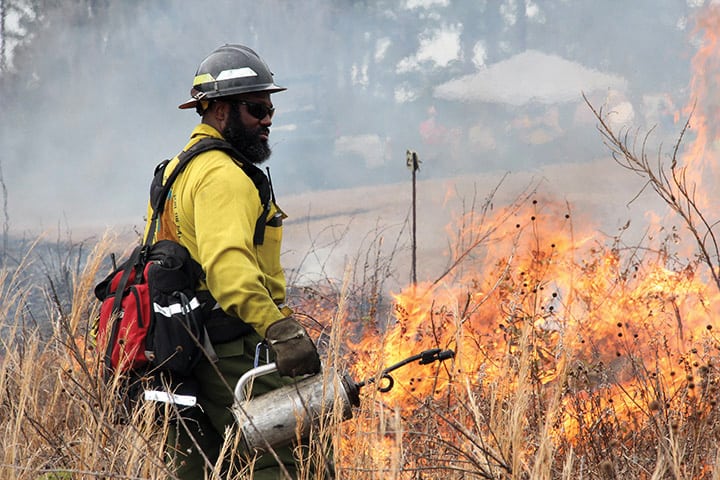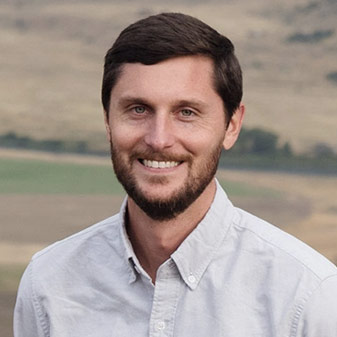This special issue of PERC Reports explores the thorny issues of forest management, wildfire mitigation, and regulatory reform. Read the full issue.
One morning last March, the South Carolina Forestry Commission website displayed the number of active fires in the state: 163. An interactive map showed each fire, represented by markers that ranged from red to orange to yellow to teal. In contrast to similar maps that are followed closely throughout the summer, particularly in the West, the markers didn’t represent wildfires. Indeed, South Carolina’s wildfire tracker showed zero active that day. Rather, these were “good” fires: prescribed burns that had been planned in advance, set deliberately, and aimed to achieve specific land management objectives, typically to control vegetation and reduce hazardous fuels.
“It’s gonna burn one day or another,” says Darryl Jones, forest protection chief of the South Carolina Forestry Commission, “so we should choose when we burn it and make sure we do it on the right days when it’s most beneficial.” He adds that the idea is to “burn an area purposely before it can burn accidentally.”
The different colors of map markers signified the purpose of each fire. Some burns aimed to improve wildlife habitat by stimulating seed production, clearing out a landscape’s lower layer of growth, or creating forest openings. Others were set to clear crop fields in preparation for planting or to burn debris piles that had been gathered and stacked. Still more were tagged “hazard reduction”: fires set to remove dangerous accumulations of pine needles, briars, shrubs, and other fuels that naturally build up in southern forests. Spring is the prime time to burn given its favorable conditions for wind, temperature, humidity, and fuel, although the burn window can extend earlier or later into the year.
Southern settlers saw the value of using fire to clear out overgrown vegetation, improve wildlife habitat, and, where livestock was raised, provide new shoots of forage. The result is that fire has been used in the South as a management tool virtually uninterrupted for millennia.
According to Jones, 61 percent of acreage burned in the state is done by private landowners on private land. “It’s not just ‘rednecks with torches,’” he says. “It’s a very consciously done plan to do a burn where you want it.” Southern landowners have been using prescribed fire for generations, and their ethos helps explain why the South burns more land for management purposes than any other part of the country—by far. From 1998 to 2018, 70 percent of all controlled burning was done in the Southeast, according to one recent study, and burning had steadily increased in the region over that period.
That has not been the case elsewhere. The same study found that the use of prescribed fire outside of the Southeast either remained flat or decreased. One explanation for this difference is policy: Like many southern states, South Carolina has tweaked liability standards for state-certified burners in ways that promote the use of beneficial fire. Western states, however, have not been as proactive in using policy to encourage prescribed fire.
The backdrop of these trends is alarming: Wildfires have become much more destructive over the past two decades, now costing billions in economic damages annually, most of it in the American West. There is growing recognition among conservationists, private landowners, academic researchers, and government officials of the need to proactively reduce wildfire risk through fuel treatments in the region. The Biden administration, for instance, plans to treat up to an additional 50 million acres of land over the next decade with a combination of mechanical thinning and prescribed burns. The U.S. Forest Service specifically aims to work with partners to “dramatically increase fuels and forest health treatments by up to four times current treatment levels in the West.”
“We’re taught that fire is bad,” Jones says, adding that it obviously is in many contexts. But he notes that mindset is a hurdle when it comes to promoting prescribed burning. It’s one that will have to be cleared to meet the growing interest—and need—to return more good fire to landscapes across the country.
A Culture of Fire
Long before European settlers arrived in North America, fires ignited by lightning or set by Native Americans changed landscapes from the Atlantic to the Pacific. Indigenous peoples used these fires for various purposes, including cultivating plants for food, medicine, and basketry as well as altering lands to clear travel corridors or manage wild game.
“In some ways, the tribes handed a drip torch to the early settlers and landowners in the South,” says Morgan Varner, director of fire research at Tall Timbers in Tallahassee, Florida. The research station and land conservancy is regarded as a national leader in the study of fire ecology and use of prescribed burning. In the American South, many settlers learned and continued traditions from Native Americans, who burned frequently but at low intensity. Southern settlers saw the value of using fire to clear out overgrown vegetation, improve wildlife habitat, and, where livestock was raised, provide new shoots of forage. The result is that fire has been used in the South as a management tool virtually uninterrupted for millennia, though modern development—cities, subdivisions, commercial properties, and the like—make it more difficult than it once was.
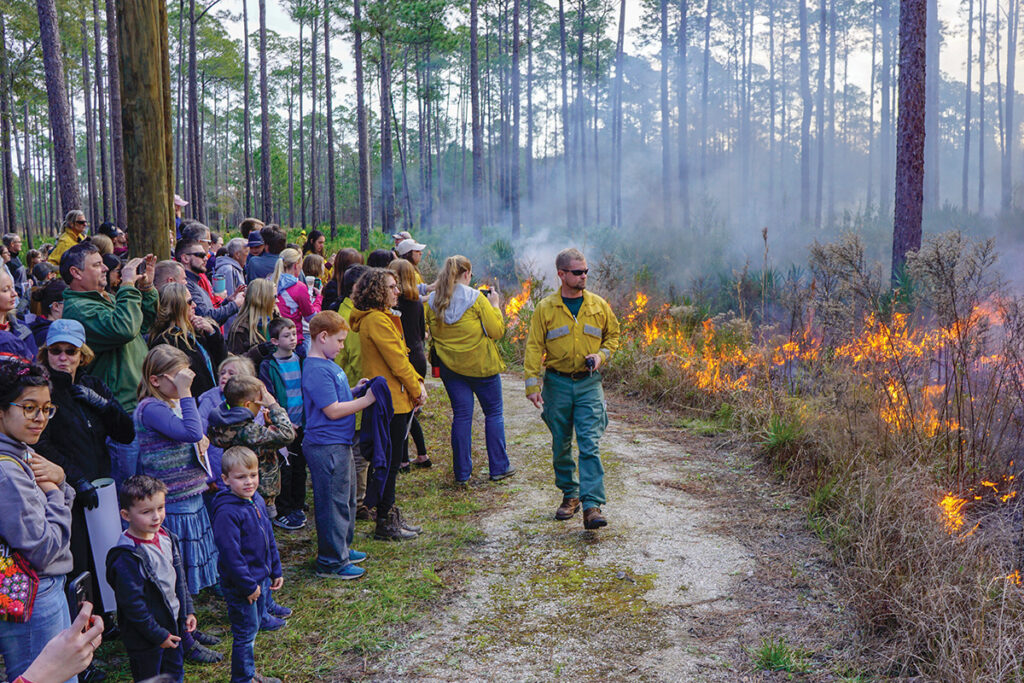
Elsewhere, especially in the West, fire became a bad word sometime in the 20th century. Part of the reason is explained by the vast amounts of public land in western states combined with the federal government’s approach to fire. After several devastating fire years in the early 1900s, federal agencies turned toward a strategy of “all-out” suppression. While that produced byproducts like the “10 a.m. policy”—which sought to extinguish all wildfires by that time the day after ignition—and, eventually, Smokey the Bear, another consequence was squashing the use of most fire for land management, including the cultural burning that Native Americans had continued to carry out in California and other western states.
A 1911 quote from scientist F.E. Olmsted sums up the stance many foresters of the time took on the view that fire could be a useful management tool, an idea they dubbed “Indian forestry”: “It is said that we should follow the savage’s example of ‘burning up the woods’ to a small extent in order that they may not be burnt up to a greater extent bye and bye. This is not forestry; not conservation; it is simple destruction.”
One result of the shift to suppression was a gradual loss of prescribed fire know-how in the West, although the practice continued in pockets. “In the 1950s and ‘60s, California was a leader nationally in prescribed fire,” says Varner, who lived in the state for eight years working as a forestry professor and researcher. He adds that it was often private landowners, mostly ranchers, who kept the practice alive. But even those pockets diminished over time. Eventually, a culture of good fire in the West has faded over generations of urbanization, development, and other changing land uses.
Many private timber owners and land managers in the South, however, had held onto a tradition of fire use. Mitigating wildfire risk was not their principal concern; they mostly used fire because it benefited commercial timber growth or habitat for wildlife, particularly quail. Today, Florida is regarded as the leading prescribed burn state in the country, partly due to the work of Tall Timbers. Fire ecologists and practitioners at Tall Timbers preached that fire was not only good but also a valid—or, on some landscapes such as longleaf pine, even crucial—management tool. After a few decades of spreading those ideas through research and advocacy, Varner jokes, “even Smokey would have said that prescribed fire is good.”
‘We Need to Burn’
One major obstacle to prescribed burning is the fact that fire can, of course, be dangerous. Landowners in particular may want to burn, but many are discouraged by the risk that comes along with setting things on fire. A fire that escapes clearly can cause great destruction, but smoke from a prescribed burn can harm others as well—damages that a burner might be liable for.
Florida has used a series of legislative and policy changes to encourage the use of prescribed fire, some of which then dispersed to nearby states. South Carolina, for example, has passed legislation that recognizes prescribed fire use as a property right and management tool available to all landowners and clarifies that the practice is not a public nuisance. The state also gradually expanded liability protections for certified prescribed fire managers—also referred to as “burn bosses”—who demonstrate competency by participating in several monitored burns. Property owners, state agency officials, or anyone else interested in the designation can apply for certification.
Now, certified burners in South Carolina who follow all applicable laws and plan a burn properly are governed by a gross negligence standard for smoke from a burn—meaning that they are liable for harms resulting from smoke only if their actions are reckless. “The rationale was that if a fire escapes,” says Jones, the South Carolina forest protection chief, “you probably did something wrong with firebreaks or planning. But if you did everything right and complied with all laws and rules and smoke management guidelines—you could do everything right but still have something go wrong with smoke if weather changes.”
Today, any landowner in South Carolina, certified or not, can use prescribed fire. But the liability advantages that come with certification make it an attractive pursuit. Many insurance providers also now require burners to be certified to obtain coverage.
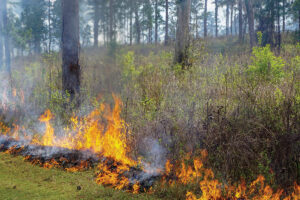
With these policies in place, South Carolina burns about 500,000 acres a year, but state officials aspire to double that. “We know we need to burn more for fuel loads, ecological functions, and healthy forests,” Jones says. The way to do that, he says, is to continue to spread the flame with private landowners. Certifying more of them is a key part of that effort. In 2021, the average prescribed burn in the state was just 19 acres for non-certified burners. For certified burners, it was more than four times that—88 acres.
In and beyond the South, much of the effort to build capacity with prescribed fire is bottom-up. While certification is aimed at people who already have a degree of fire experience, the initial steps into prescribed fire use are often “learn to burn” workshops sponsored by conservation groups, wildlife organizations, and state agencies. In about a dozen states, including a strong vein in the Midwest, landowners and fire practitioners have also formed prescribed burn associations to share expertise, equipment, and manpower.
“Landowners know they need to burn but don’t feel comfortable taking the first step,” says Jones. “It’s intimidating to come to a class, make a plan, and then go ‘light the woods on fire.’” And the dangers are real—one harrowing escaped fire occurred during a Colorado state-agency prescribed burn in 2012, which killed three people and damaged 27 homes. In May, a prescribed burn carried out by the U.S. Forest Service in New Mexico grew into the largest wildfire in state history, engulfing more than 300,000 acres, after wind conditions changed rapidly. As the fire raged, the agency announced it was halting prescribed burns on its lands nationwide to conduct a 90-day review of its prescribed fire program. Such cases of escaped fires are undeniably tragic, but a blanket ban on controlled burns will only make it harder to meet the agency’s treatment goals. And thankfully, prescribed burns are exceedingly safe on the whole. According to one study that reviewed more than 23,000 prescribed burns covering 3.7 million acres across the nation, only one insurance claim was reported, only one minor injury occurred, and more than 99 percent did not involve even a small escape.
Data show that burns have been increasing in the South, even if spreading good fire remains a steeper hill to climb in other places. Jones notes that he’s seen progress over recent decades. In 2008, certified burners accounted for 43 percent of acreage burned in South Carolina; last year they accounted for 71 percent. “That number has steadily increased since about 2005,” says Jones. “That tells me something’s working.”
Growth of Good Fire
Prior to 1800, approximately 4.5 million acres burned annually in California, much of it done by Native Americans. Today, roughly 125,000 acres are treated with prescribed fire each year, a total the state aims to increase nearly fourfold. Florida—a state less than half the size—burns about 2 million acres annually.
“When I go out and I burn, I have no liability protection,” Lenya Quinn-Davidson, a fire adviser for the University of California Cooperative Extension and director of the Northern California Prescribed Fire Council, told NPR last year. “I’m assuming full responsibility for those projects. And most of the time, we’re doing those projects for public benefit, to reduce wildfire risk, to restore habitat, for cultural reasons.” A few months later, Quinn-Davidson had reason to celebrate. California had passed legislation that protects certified burners from liability for suppression costs incurred as a result of a prescribed or cultural burn. The state also recently committed $20 million to a fund that will pay damages above and beyond private insurance if a prescribed fire escapes.
In March, California released a “strategic plan” outlining how state politicians and officials aim to expand the use of beneficial fire. A prominent goal is to accelerate the review and approval of prescribed burns, a notoriously slow and unpredictable process in California, where it can take months to obtain a burn permit. By contrast, various southeastern states issue permits over the phone in minutes to burn the same day.
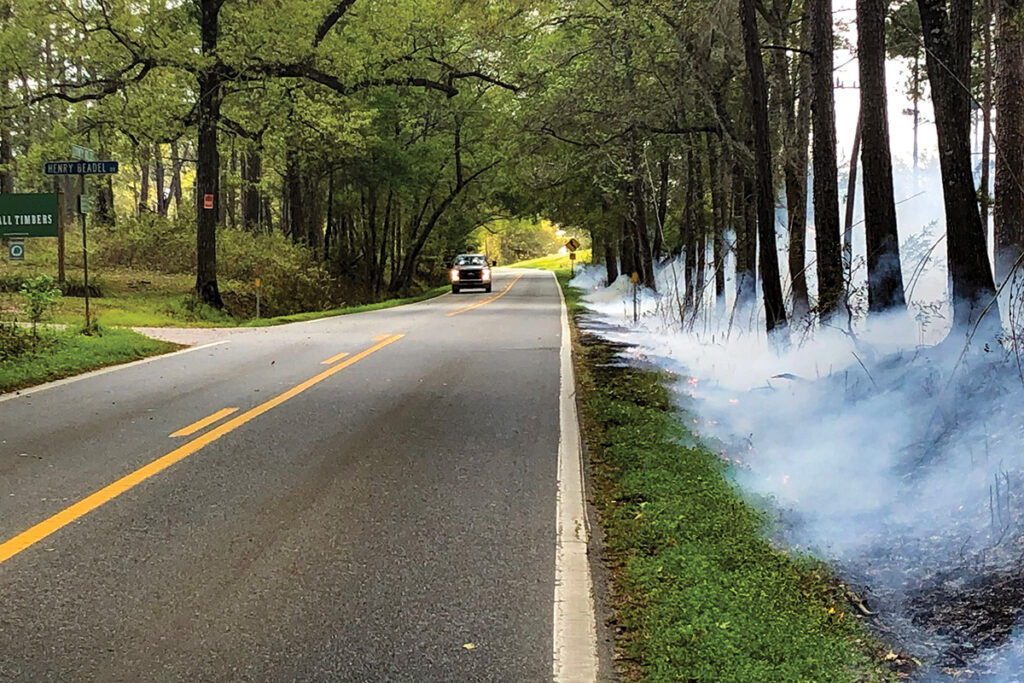
A report from Bay Nature magazine noted that California’s “restrictive permitting procedures impede rather than facilitate prescribed burning.” It continued: “Most years, starting in May and running through summer and fall—roughly the season when megafires have engulfed the state—the agency prohibits most intentional burning, pausing much of its own burning activity, too.” In a similar vein, research in the journal California Agriculture lamented uncertainty around permit approvals and the fact that there are “no standards for how long a permit lasts.” It also noted that the blanket seasonal suspensions of permits are overly blunt and counterproductive to burn goals, especially during the state’s prime burn window—the most favorable weather and fuel conditions—in the fall.
Other state priorities include continuing to address liability barriers for private landowners and supporting tribes to revitalize cultural burning. In contrast to bygone, bigoted views toward “Indian forestry,” it’s notable that California is making it a priority to include tribes when it comes to forming new fire policy. “While there is common knowledge of the use of fire by Indigenous peoples,” a recent Karuk Tribe report reads, “the ability to utilize cultural burning is largely curtailed by state and federal policies rooted in paternalistic governance and the legacies of racism, which conflict with traditional law and cultural practices for burning.” The state’s new plan—on paper at least—makes a long-overdue pledge: to “better integrate tribal organizations and cultural fire practitioners into public agency prescribed fire projects and programs.”
A Humboldt County resident, Quinn-Davidson supports the use of good fire with local private landowners and prescribed burn associations. She also helped develop and then lead California’s first burn certification course in the spring of 2021. While she lamented the nearly year-long delay it took for the state to certify the first participants, the process has been streamlined since, and she helped lead a second cohort through the class in April. “It makes sense for the people who live in and know a place to be empowered to use prescribed fire,” she says. “A local, flexible workforce will be better able to jump on burn windows and manage for the resources they care about.”
Keeping the Flame
The efforts in California exemplify how several western states are starting to overcome decades of inertia and entrenched policy challenges to promote the use of prescribed fire. Last year, New Mexico passed a bill to establish liability protection and certification similar to those in many southern states. Oregon legislators also recently directed the state forestry department to set up a program to certify burners, and Washington is carrying out a pilot to help develop its own prescribed fire programs.
While many of these western states have taken a lead from the experience of Florida and its neighbors, their prescribed fire approaches don’t have to—and indeed shouldn’t—mirror eastern states exactly. The West is more or less defined by seasonal drought and aridification. In many southern states, heavy humidity is taken as a given, and locals think something is wrong if it doesn’t rain for two weeks. Beyond climate, there are many other distinct factors, including forest types, mix of public and private lands, and approaches to air quality regulations, that warrant careful consideration. As with any policy, local context and on-the-ground knowledge will be paramount.
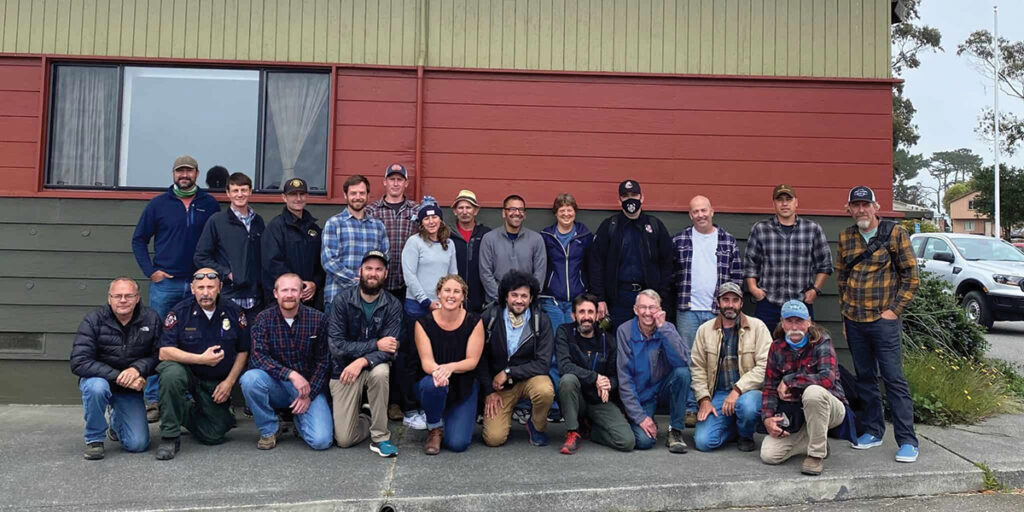
The fact that western states are now crafting policies to support good fire is also an opportunity to innovate. For instance, an idea to establish a “catastrophe fund” outlined by Varner, Quinn-Davidson, and fellow researchers, could hold promise to compensate for losses from prescribed fires while still limiting liability for practitioners.
Given the destruction of recent fire seasons, western states seem especially ripe for creative policy innovations that can unleash tribes, landowners, and public land managers to use more prescribed fire. Efforts to mitigate wildfire risk in the West by returning more good fire to the land may hinge on how successful they are in doing just that.
